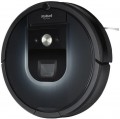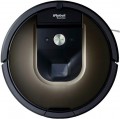Suction power
The suction power provided by the vacuum cleaner. For models with power adjustment (see below), in this case, the maximum value is taken into account. Note that "suction power" is sometimes erroneously also called the suction force, indicated in pascals; see below for more details.
Suction power is a key indicator that determines the capabilities of the unit: the higher it is, the more efficiently the vacuum cleaner can draw in various contaminants, and the better it handles with carpets, fabrics and other materials into which dust can penetrate deeply. On the other hand, high power inevitably affects the weight, power consumption, dimensions and price of the device. Therefore, it does not always make sense to chase the maximum values — you need to take into account the real working conditions and the general purpose of the vacuum cleaner.
The specific numbers found in this paragraph largely depend on the type of device. For example, in handheld household models, suction power
does not exceed 100 W,
and for conventional household units, an indicator of 100 – 150 W is still considered very limited. At the same time, we note that the minimum required for a full-fledged dry cleaning of smooth floors is considered to be
300 – 350 W,
for carpet and other short pile coatings — 350 – 400 W, and for long pile materials and upholstered furniture
higher rates are desirable. Vacuum cleaners with lower suction power values are intended not so much for periodic cleaning, but for constant (ideally daily) maintenance of cleanliness in an already tidy room.
As for the relationship between suction power and suction force, it is as follows: power is the suction force (thrust) multiplied by the airflow (performance). Without going into too much detail, we can say that the efficiency of the vacuum cleaner is determined by both of these indicators. And it is worth evaluating this efficiency by suction power (regardless of the specific relationship between traction and performance).
Dust collector capacity
The nominal volume of the dust collector installed in the vacuum cleaner.
This indicator largely depends on the type of unit (see above). For example, in most handheld household models, the capacity
does not exceed 0.5 L. The volume of the container in upright vacuum cleaners and robots can be somewhat larger — among the first variety there are quite a few models for
1 – 2 liters or even more, and among the second — by
0.6 – 1 liter and a little more. For conventional vacuum cleaners, the minimum figure is actually about 0.8 – 1 L; dust collectors for 1 – 2 L and
2 – 4 L are very popular in such devices; the maximum capacity is actually
4 – 6 liters — units of a similar layout, but with a larger capacity, are usually referred to as household ones. In turn, relatively small containers are occasionally found among workshop models. However, in vacuum cleaners of this type, the capacity is generally quite large — it can reach
26 – 50 liters or even
more ; the same applies to industrial (construction) units.
In general, a larger dust container allows you to work longer without interruptions. On the other hand, a capacious container itself takes up more space and, accordingly, affects the size, weight and price. So when choosing th
...is parameter, it is worth considering the actual features of the use of a vacuum cleaner. Here we can give such an example: for a full-scale cleaning of an average city apartment, a capacity of about 1 – 1.5 litres is required. Thus, say, a 4-litre bag allows you to carry out two such cleanings with sufficient efficiency without unloading the vacuum cleaner. There are more detailed recommendations regarding the optimal volume of the dust collector, including specific cleaning options. These recommendations can be found in special sources.Power adjustment
The type of power regulator provided in the design of the vacuum cleaner.
By itself
, power adjustment allows you to adjust the operating mode to the current situation. For example, to clean a thick carpet, it is better to use a vacuum cleaner on full power, and on a delicate sofa or chair, it may be better to reduce the power. Types of power regulators are distinguished by location; options can be as follows:
— On body. The most popular option among modern vacuum cleaners. The main advantage of models with this design is that they do not require special hoses (unlike the units described below with adjustments on the handle). However, installation on the body is not very convenient for conventional vacuum cleaners (see "Type") — to change the power, you have to lean towards the body every time. However, for most users, it is not critical.
— On handle.
The power regulator on the handle of the vacuum hose is convenient because the control is right at your fingertips, and you can change the power with just one movement of your finger, without bending over to the body. However, this convenience has a downside. So, some of these vacuum cleaners can only be fully used with special hoses; when installing a classic hose (without a regulator), the device, at best, will only work at full power, without adjustment, at worst, it will not turn on at all. A special hose is usually included
...in the kit, but finding a replacement for it can be a quite troublesome (and costly) business. In other models, a wireless remote control is used, and its presence significantly affects the price of the unit.
— On body and handle. Vacuum cleaners combine both of the options described above. Usually, a hose with a regulator on the handle is supplied with such a unit. However, if necessary, you can install a regular hose and change the power with a switch on the body. Such control is the most versatile. Nevertheless, it is more expensive than each of the options described above.Voice assistant
Types of
voice assistants supported by the robot vacuum cleaner.
As the name implies, this function allows you to control the robot using voice commands. However, we emphasize that in this case, we are not talking about the voice recognition system built into the vacuum cleaner but about compatibility with an external device on which the corresponding voice assistant is installed — a smartphone, tablet, smart speaker, etc. Thus, to use voice control, an additional device will inevitably be required; on the other hand, there are no problems with the search for such a device nowadays. And in itself, such a control method often turns out to be more convenient than a command from the remote control or searching for the desired option in the control application.
As for specific assistants, the most popular nowadays are (in alphabetical order) Amazon Alexa, Apple Siri, Google Assistant. And in robot vacuum cleaners, compatibility can be provided both with one of them and with several at once. The specific control functionality available through the voice assistant should be specified separately for each model. It is also worth paying attention to the supported languages: for Siri, the language must be selected in the settings, for the Google Assistant, automatic language recognition is available (some adjustment may be required), and in Alexa (as of early 2021) support for the Russian language is not provided at all.
Charging time
The time required to charge the cordless vacuum cleaner fully (see "Power supply").
Larger batteries tend to take longer to charge. On the other hand, modern batteries can use various solutions that speed up the process, so there is no strict dependence here.
Separately, we note that the speed of charging batteries is usually uneven: at first, the process is fast, then it gradually slows down. So if, for example, the specifications indicate a charging time of 2 hours, then charging from 0 to 50% will take a little less than an hour, and from 50% to 100% the remaining time.
Noise level
The noise level produced by the vacuum cleaner during operation. Usually, the value for normal operation at maximum engine power is indicated here. With less power, the loudness of the unit may be lower, but the key is precisely the maximum indicator.
Regarding specific numbers, keep in mind that the decibel used to measure the noise level is a non-linear quantity. Therefore, it is worth evaluating specific indicators using special comparative tables. In general, vacuum cleaners are quite noisy appliances; so in this case, models are considered quiet if this indicator
does not exceed 65 dB — this is the level of a loud conversation between 2 – 3 people at a distance of 1 m. The quietest of these models give out only 40 dB — this is the average volume of a person’s speech in normal tones (and the minimum volume allowed for constant noise sources in living quarters during the day). For louder units, the comparison table looks like this:
—
66 – 70 dB — loud conversations between several groups of people at a distance of about 1 m;
—
71 – 75 dB — the volume of a cry or laughter in full voice at a distance of about 1 m;
—
76 – 80 dB — the volume of a mechanical alarm clock or the engine of an old truck;
—
more than 80 dB — a very high noise level, exceeding the level of a loud scr
...eam; when working with a vacuum cleaner having such specifications for a long time, it is highly desirable to use hearing protection.
Also note that the noise level largely depends on the engine power, as well as some other features (for example, it is strongly affected by the presence of an aquafilter — see "Dust collector"). At the same time, there is no hard connection here, and units with a similar set of specifications can differ markedly in actual loudness. In such cases, when choosing here, it is worth proceeding from the fact that a quieter vacuum cleaner will be more comfortable to use. However, it will most likely cost noticeably more.
